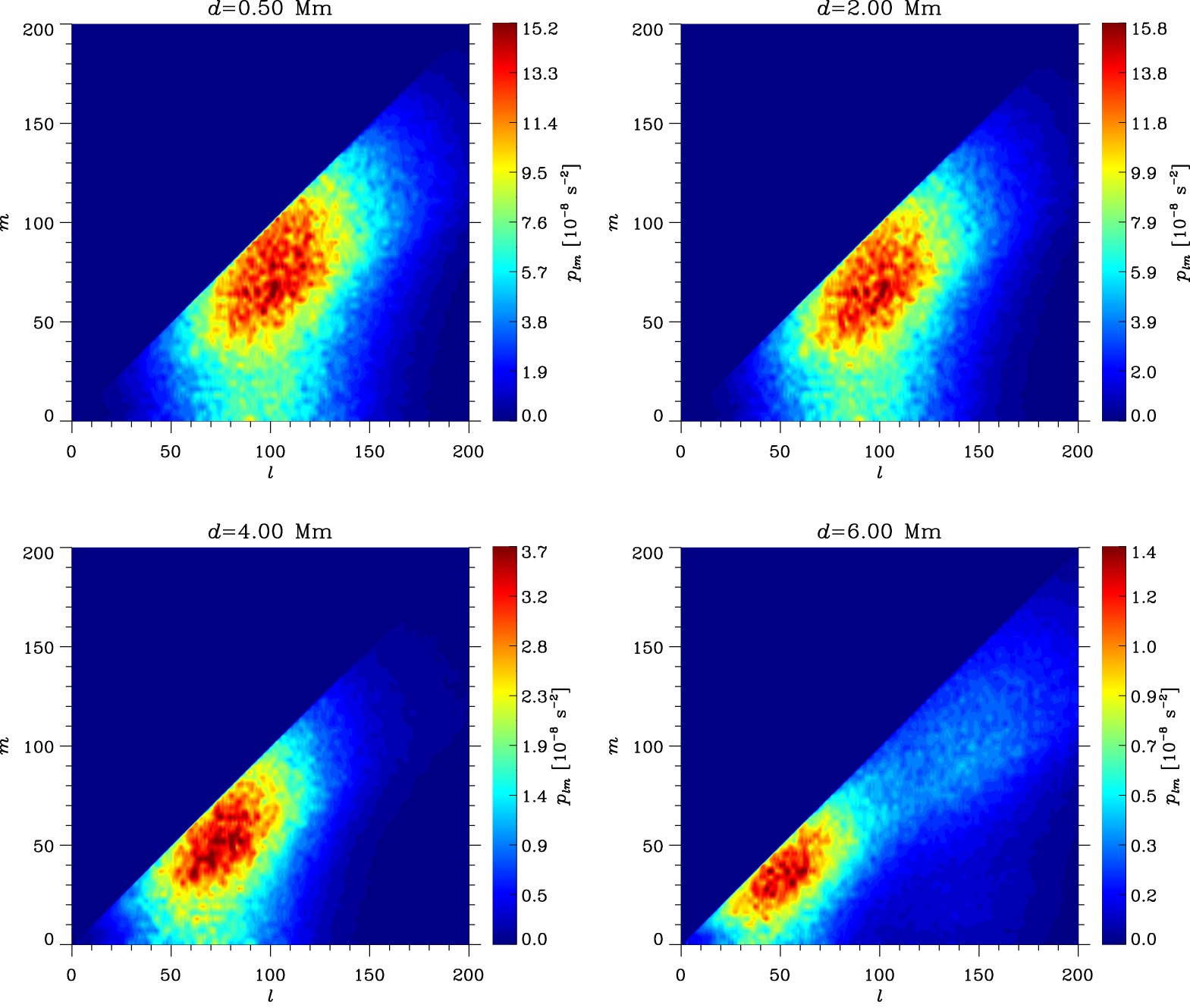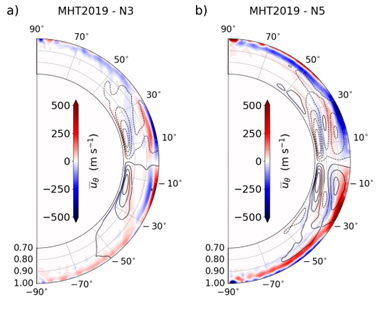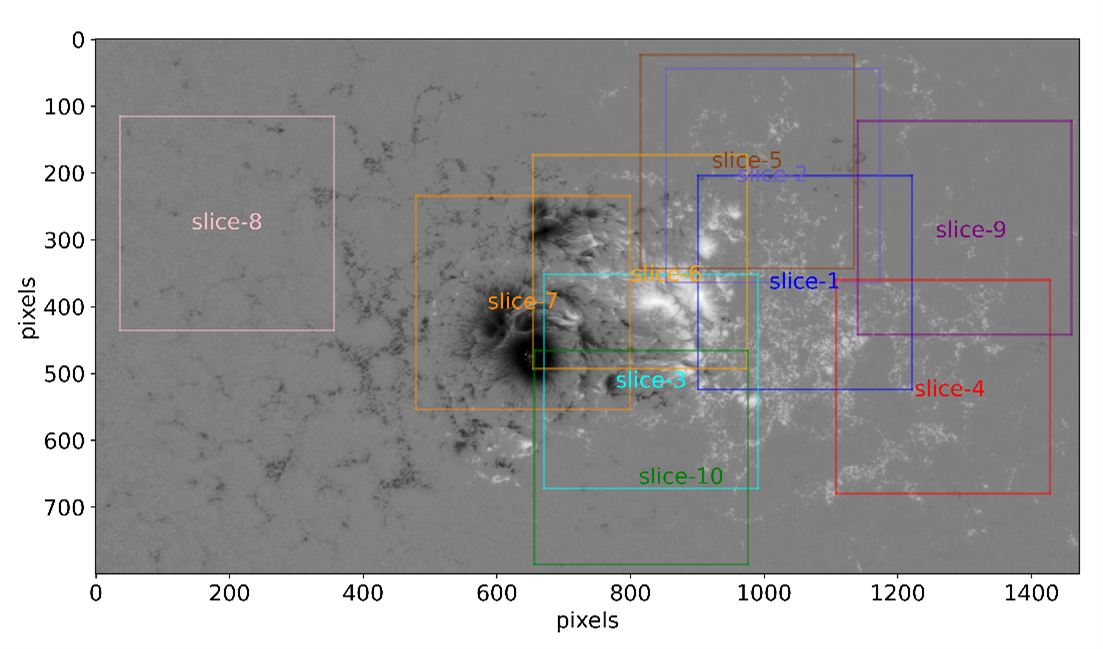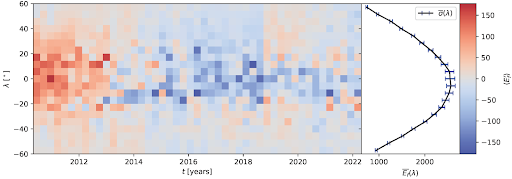189. Spatial Scales and Time Variation of Solar Subsurface Convection
Spectral analysis of the spatial structure of solar subphotospheric convection is carried out for subsurface flow maps. It is found that the horizontal flow scales increase rapidly with depth, from supergranulation to giant-cell values. The total power of the convective flows is found to be anticorrelated with the sunspot number variation over the solar activity cycle in shallow subsurface layers and positively correlated at larger depths.




